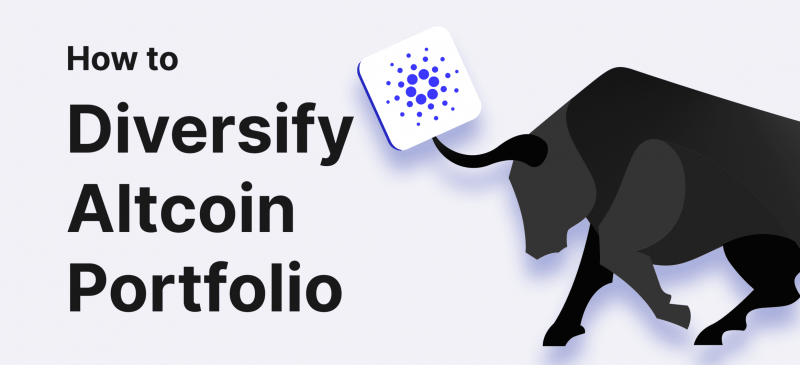The popular advice from experienced traders — don’t put all your eggs in one basket — is applied to all assets and markets and is relevant even during the bull markets when things seem to go very smoothly.
This article will discuss the key characteristics of a crypto bull market and explore ways to diversify your portfolio with altcoins.
Key Takeaways
- A crypto bull market is a period of rising crypto prices, higher demand for crypto assets, and positive investors’ sentiments.
- Allocation implies dividing investments among different asset classes.
- Diversification suggests spreading investments among and within different classes of assets.
- Bitcoin, a leading digital asset, can add significant value to your portfolio, but altcoins contribute to greater diversification.
What is a Crypto Bull Market?
The bull market occurs when investment prices significantly increase, leading to widespread optimism among the crypto community. Investors are eager to join in because they believe the market will keep rising. The bull market attributes its strength to the improved economy, higher corporate earnings, decreased interest rates, and favourable government initiatives.
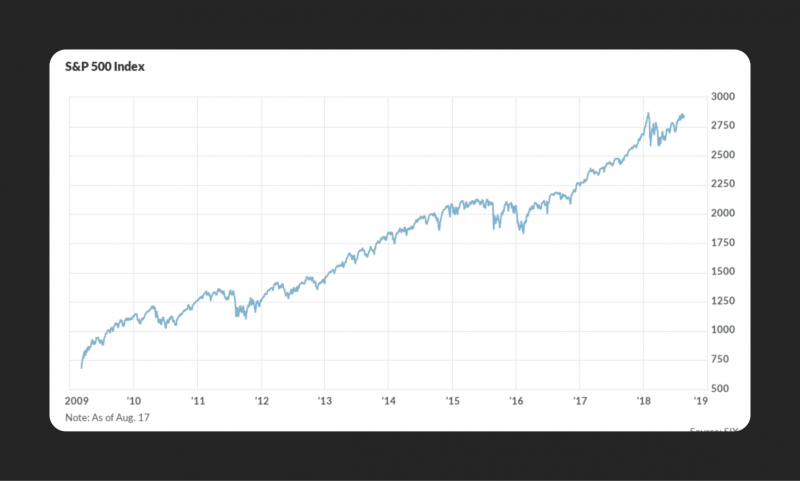
A bull in a crypto market is a speculator who purchases crypto coins with the intention of selling them with profit as their price grows. These markets occur when investors are optimistic about their crypto investments, and rising asset prices and returns boost their confidence.
A bull market can last for weeks, months, or years. However, accurately predicting a bull market is challenging as it can only be spotted in hindsight.
A bull market can be attributed to positive economic growth, tax cuts, and lower interest rates. A rise in GDP can improve other economic indicators, leading to better profit margins and earnings growth rates. Governments adopting expansionary fiscal policies may leave investors with better savings, resulting in increased investment and higher financial asset prices.
Lower interest rates on fixed-income securities may also encourage investors to invest in other areas with higher potential returns, leading to a bull run in the market.
Essential Characteristics of the Bull Market
A bull market is characterised by an upward trend and high investor confidence, leading to increased buying activity and a cycle of higher prices. Bull markets often coincide with periods of economic expansion, resulting in strong economic indicators fueling investor confidence.
Additionally, multiple industries and sectors tend to experience growth, reflecting broader market optimism. Low unemployment rates are often associated with bull markets, indicating a healthy economy and increased consumer spending.
Here are some key indicators of the crypto bull run in the market.
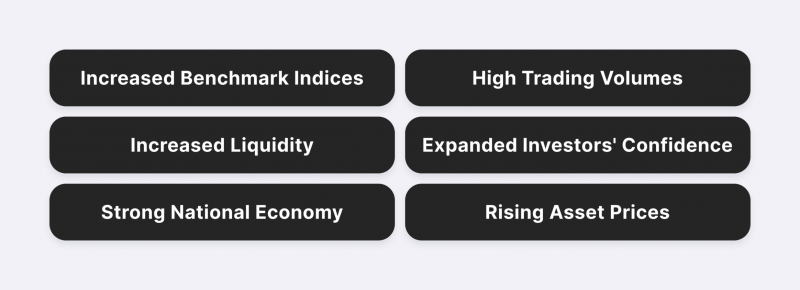
- Increased benchmark indices – The market typically experiences a 20% increase over two months or more, as measured by broad indexes like the Dow Jones or S&P 500.
- High trading volumes and increased liquidity – Due to the higher demand and prices, trading volumes grow, triggering the boost of liquidity.
- Expanded investors’ confidence – During a bull market, investors feel confident in its strength and future performance, buying more crypto and holding onto their investments.
- Strong economy – A bull market typically signifies a robust economy with high employment levels, a growing GDP, and positive performance in other key economic indicators.
- Rising asset prices – An increased demand drives the asset prices up, indicating the bull trend in the market.
Risks of a Bull Market
Bull markets offer easy gains, but there are also many risks associated with this trend.
Prolonged positive returns may result in complacency, causing investors to lack preparedness for potential market reversals.
Market volatility can also occur, causing short-term losses and affecting investor sentiment. Pack mentality, influenced by others’ behaviour, can result in exaggerated market risks due to emotional or overconfident decisions.
Bull markets can lead to overvaluation of asset prices due to excessive optimism and speculation, causing significant losses for investors.
Investors may relax their investing approach when assets continue to rise, especially in a bull market. However, outsized losses can occur when the market trend ends, especially for speculative investors.
This can be temporary but could permanently change the outlook for smaller, less established companies, making it crucial to be cautious in such situations.
During a bull market, less disciplined or aggressive investors may engage in more speculation, leading to a market bubble. This occurs when assets are trading for more than they’re worth.
Market bubbles can provide opportunities for gain but can also lead to investor panic and a rapid fall in prices. This correction or crash may trigger a new bear market, lingering until investor confidence is restored.
Overall, it’s essential to be cautious and disciplined in your investing approach.
Asset Allocation vs Diversification
When it comes to safeguarding your investment portfolio, allocation and diversification are two options that come to your mind first of all.
Asset Allocation
In simple terms, asset allocation means putting your money into different asset classes like stocks, bonds, cash, options, futures, commodities, and real estate, while diversification means spreading your money out within those different types of investments.
Asset classes respond differently to economic and political changes, so including different classes in your portfolio increases the likelihood of satisfactory returns. Additionally, target asset allocation for different accounts, such as investing more heavily in cash or stocks, can also impact returns.
It’s essential to implement an optimal allocation strategy to reach your goals and feel comfortable with the amount of risk you’re taking. It involves evaluating the level of risk you are willing to take and the returns you want to attain through your investments.
It also entails examining your financial status, determining the investment timeframe, and assessing the volatility level in the market.
Time horizon plays a significant role in asset allocation, with longer-term goals like retirement planning allowing for higher allocation to growth-oriented assets like stocks, while shorter-term goals like saving for a down payment may require a more conservative allocation to minimise volatility.
Regularly monitoring and rebalancing your investment portfolio is crucial to maintaining a balanced approach and achieving desired returns while managing risk.
It is important to note that achieving an optimal asset allocation is an ongoing process that requires monitoring, evaluation, and adjustments as the financial situation and investment goals evolve.
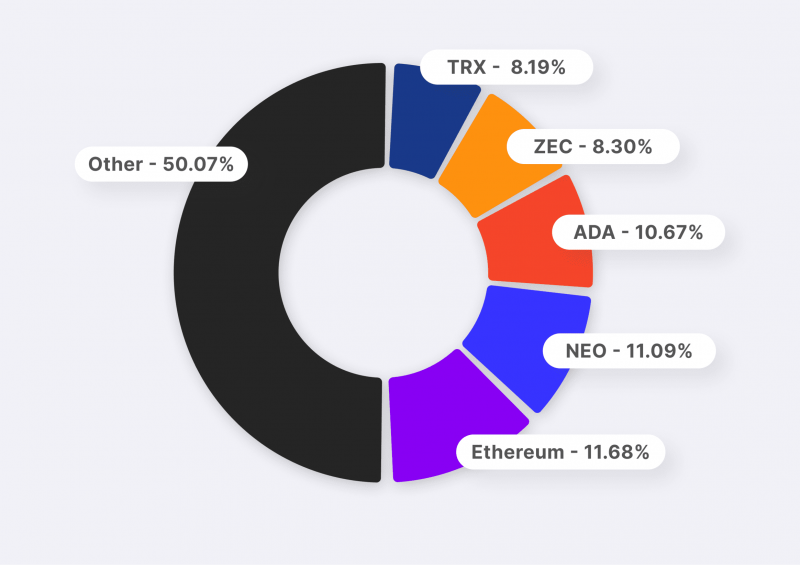
Asset Diversification
Diversification involves spreading money across different investments within the same asset class rather than focusing on the best stock or bond.
Diversification is a strategy that helps mitigate the risk associated with high-risk investments, particularly in the cryptocurrency market. It involves investing in a wide range of different investments rather than just one or two.
Such risk diversification reduces the chance of significant losses, as even if one asset fails, there are chances that another asset may perform differently. Some assets may retain their value, while others may rise, thus improving the overall portfolio.
The principle of diversification tells us that you can diversify by coins, industry, asset classes, and investment vehicles.
Diversifying your direct ownership of digital coins is the most straightforward method to increase the diversity of your crypto portfolio. For this method, you can choose among payment tokens, security tokens, gaming tokens, NFTs, etc.
Diversifying your crypto or blockchain portfolio can be achieved by investing in projects focusing on various industries, such as healthcare, entertainment, climate change, and real estate — blockchain technology is applied to many sectors.
Crypto and blockchain investors have numerous asset classes to choose from, like stocks, bonds, or commodities, to diversify their crypto portfolios.
Investors can diversify capital across various investment vehicles and account types if portfolio security is a perceived risk area. Thus, they can choose from such options as digital wallets, crypto individual retirement accounts, taxable brokerage accounts, or DeFi products.
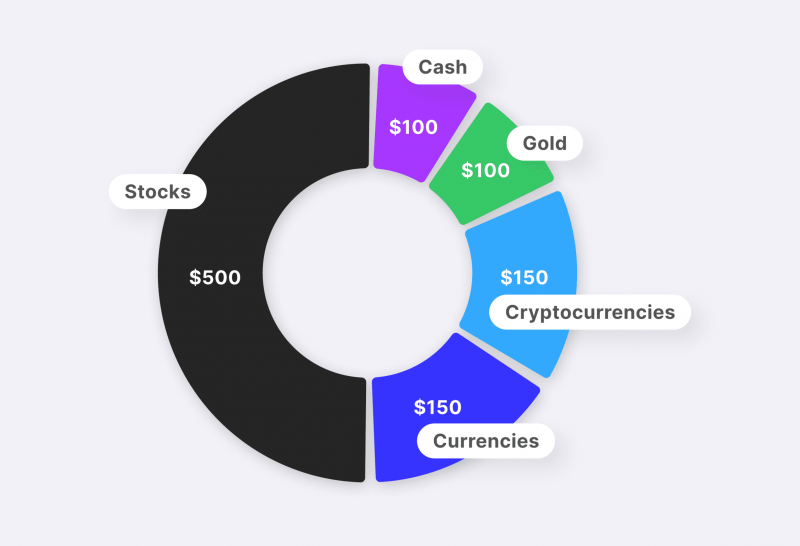
Bitcoin vs Altcoins: What Direction to Take in a Bullish Market
Bitcoin (BTC) is the leading cryptocurrency by market value and is the most traded one. It has seen a significant surge of over 150% this year, surpassing traditional assets like the S&P 500, gold, and the U.S. dollar.
In 2024, Bitcoin could lead the cryptocurrency market into a bull market due to its perfectly aligned supply-demand conditions. The upcoming Bitcoin halving event in April 2024 and the potential approval of Bitcoin ETFs could support a crypto market bull run.
Long-term BTC holders are accumulating coins, reducing market supply. Institutional investor interest in Bitcoin has steadily increased in 2023, with record-high open interest in BTC futures.
However, during bullish periods, astute traders and investors are more willing to take risks and explore lesser-known projects to identify the subsequent big success. As such, altcoins get increased demand, which consequently leads to higher prices.
The choice of the altcoin is fueled by a combination of factors, including technological innovations, partnerships, and real-world use cases.
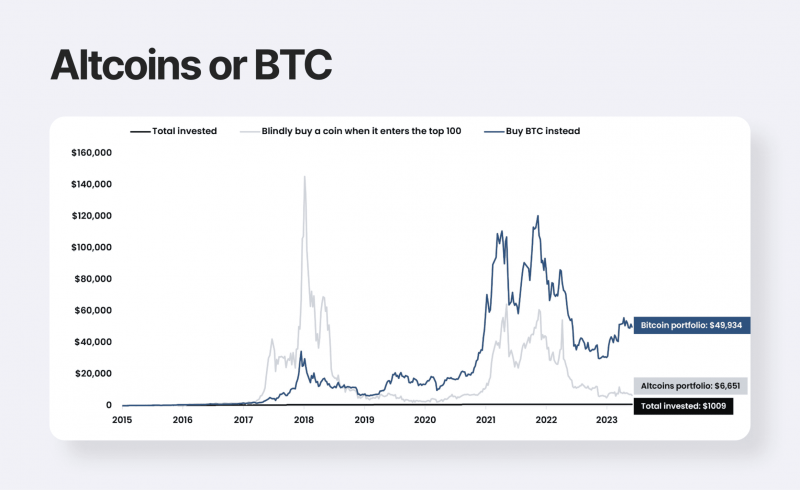
So, which option will benefit investors most — Bitcoin or altcoins? Let’s discuss.
Pros and Cons of Investing in BTC in Bull Run
Bitcoin’s three-year chart shows a 1,360% return, indicating increased regulatory attention and a growing interest in digital currencies, with even traditional banks enhancing their digital currency strategies.
Today, over 20,000 cryptocurrencies are available, with more being created daily. But BTC remains the most popular, and it’s unlikely that any of the newly created cryptos can threaten BTC’s value in the long run.
Bitcoin’s inherent scarcity, similar to that of gold and silver, means its value will rise over time due to increased demand, even in short-term price fluctuations, providing investors with the greatest opportunities.
Bitcoin is extremely popular among individuals and businesses worldwide, and according to some experts, its global adoption might happen in the near future, which is another benefit of investing in BTC today.
Bitcoin has a limited supply, so unlike fiat currencies, it cannot be devalued, which is an excellent hedge against inflation.
However, there are also many risks in BTC investments.
Bitcoin’s success may be disrupted by a better technical solution to its problems, while heavy-handed government regulations could potentially undermine its growth.
Despite the fact that BTC has a large market share now, its software is still in the beta-testing stage, and potential changes could lead to developers removing the hard cap on total Bitcoins, potentially losing inflation protection.
Also, Bitcoin’s PoW algorithm might be a significant drawback since it is detrimental to the environment, lacks protection and has more reliable and eco-friendly alternatives, like Proof-of-History (PoH).
Pros and Cons of Investing in Altcoins in Bull Run
Altcoins, distinct from Bitcoin, have established a significant market niche. During a bull run, altcoins experience significant growth driven by the influx of seasoned and new investors, the development of new technologies, diversification of investment portfolios, speculation about future potential, and the increased adoption of altcoins due to their specific use cases.
Many altcoins push scalability, security, and governance boundaries, benefiting the entire blockchain industry. They offer high returns on investment, with some experiencing significant growth in value.
Because altcoins were developed after Bitcoin entered the crypto market, they have significantly improved their technology, offering superior transaction speeds and costs compared to Bitcoin.
Some altcoins, like Ethereum or Solana, may overperform Bitcoin due to their extensive use. For example, on the chart below, you can see that since the beginning of 2023, SOL-USD has shown a return of 626.52%, which is significantly higher than BTC-USD’s return of 160.00% (the chart shows the growth of a $10,000 investment in both assets, adjusted for splits and dividends).
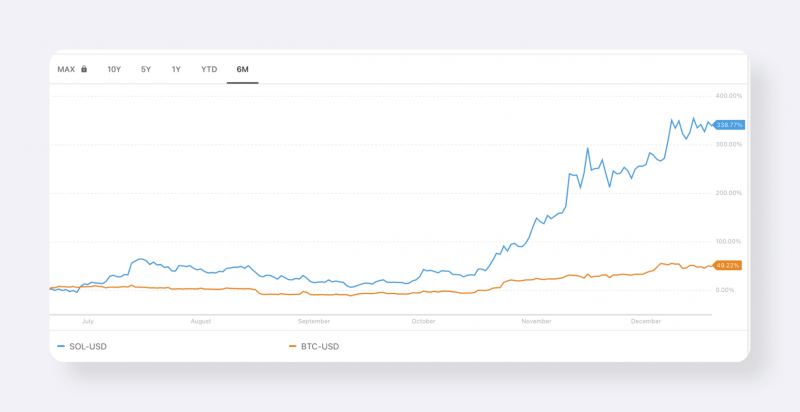
Despite possible benefits, altcoins pose risks to your digital asset portfolio, like high volatility, lower liquidity, and sensitivity to market sentiment. Newer altcoins can face price swings due to speculative trading and hype. Many may not survive due to a lack of adoption, technical issues, or changing market dynamics. New altcoins constantly enter the market, potentially disrupting existing projects.
Also, altcoins’ share in the crypto market is tiny compared to that of Bitcoin since BTC was the first to start the crypto market.
To mitigate these risks, invest in different types of tokens, limit the share of altcoins in your portfolio, and always stay updated on altcoin developments, technology, regulations, and trends.
Experts predict a surge in altcoins like ChainLink, Arbitrum, and Optimism, while Bitcoin is predicted to lead the rally and become a trillion-dollar asset.
How to Diversify Your Portfolio Through Altcoins
Altcoin’s ecosystem comprises NFTs, stablecoins, meme coins, P2E tokens, governance tokens, and many others. Some offer high growth potential due to their innovative use cases and emerging technologies, while others, like DeFi tokens, provide access to DeFi, and privacy coins appeal to those seeking transaction anonymity.
Altcoins can significantly enhance a cryptocurrency portfolio by offering diversity in terms of growth potential, stability, and innovation.
Thus, adding ETH to your crypto portfolio can add to your profit and stability since it’s the most popular altcoin and the biggest one by market cap.
On the other hand, investing, for example, in meme coins, can be rather risky since they lack the fundamental value, are highly volatile, and often turn out to be scams. However, well-established meme coins like Dogecoin or Shiba Inu can become gems in your portfolio, offering high returns and many lucrative opportunities.
This diversification helps capitalise on unique altcoin opportunities and spreads risk across different assets, so add both low-cap gems and large-cap cryptos to survive during bears and profit during bulls. But remember that in the long run, building a portfolio depends on investors’ preferences and risk tolerance. Diversification is always key.
Bottom Line
The crypto bull market attracts investors and offers high potential returns. However, it also poses many risks if the investment portfolio is poorly composed. To succeed in the market, it is crucial to allocate and diversify your portfolio correctly, and altcoins are an excellent instrument for this purpose.
FAQ
What is the optimal crypto portfolio allocation?
The optimal crypto portfolio is determined by an investor’s risk tolerance, with younger investors generally having a higher tolerance for higher volatility cryptos.
Is it better to invest in altcoins or just BTC?
Modern portfolio theory suggests that investing in both Bitcoin and altcoins would increase portfolio returns and reduce risk.
How do you manage risk when investing in a bull market?
Minimise risk by distributing your investments across a range of diverse areas and assets. Avoid investing a large amount of money in a single stock or industry, and consider investing for a protracted period.
